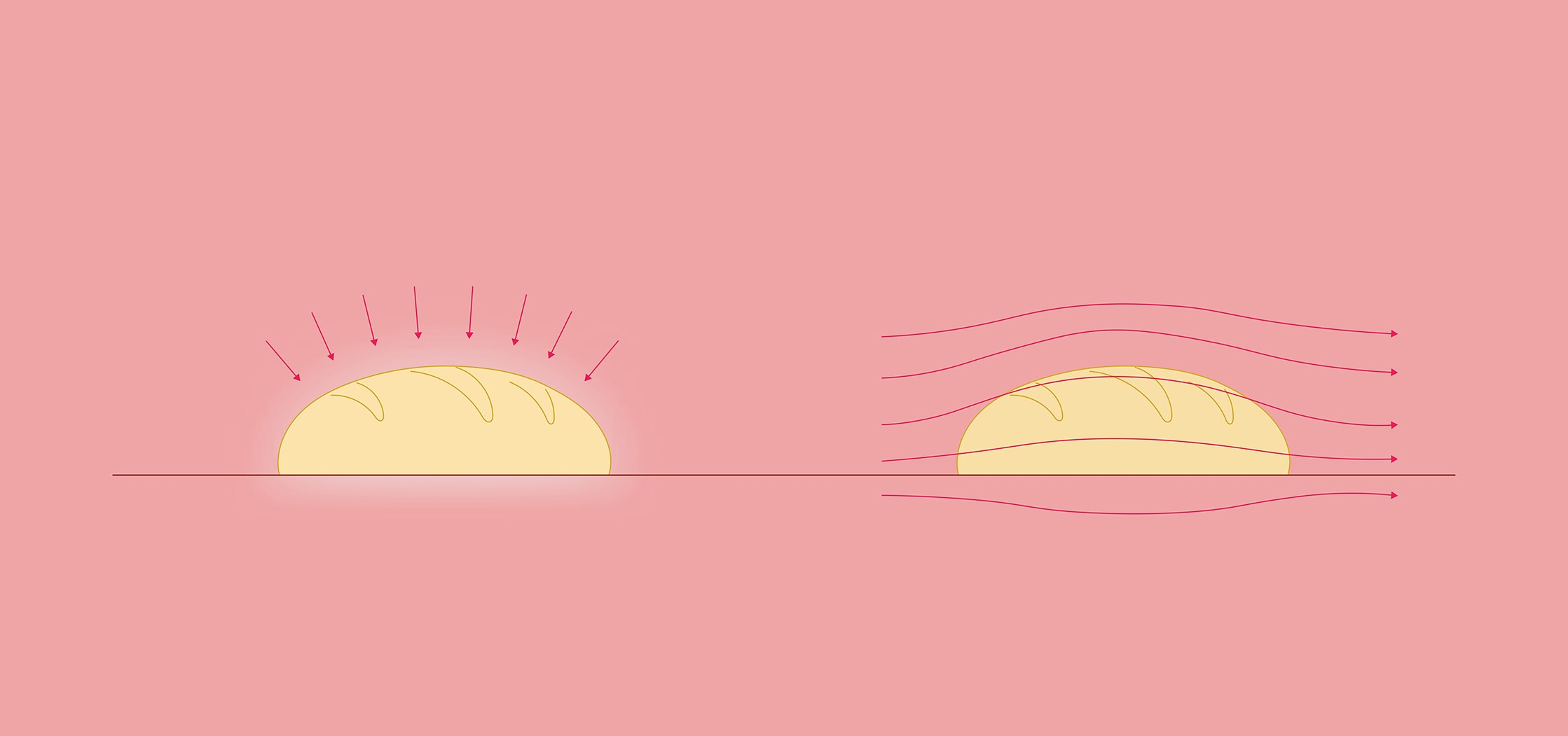Roasters often overlook a critical parameter in heat transfer: airflow. The rate of heat transfer depends not only on the temperature difference between the air and the beans, but on the flow of air past the beans as well.
Airflow explains why a fan oven (also called a convection oven) cooks food more quickly than a conventional one: the continuous stream of hot air blowing past the food transfers heat more efficiently than the static hot air in a conventional oven. The same thing happens in reverse when you step outside on a windy day: the air blowing past you feels colder because it can absorb heat from your body more quickly.
 In a conventional oven (left), heat transfers to the food from the air. The air closest to the food becomes slightly cooler as a result, reducing the rate of heat transfer. In a fan oven (right), the fan supplies a constant stream of fresh hot air, so the food cooks more quickly.
In a conventional oven (left), heat transfers to the food from the air. The air closest to the food becomes slightly cooler as a result, reducing the rate of heat transfer. In a fan oven (right), the fan supplies a constant stream of fresh hot air, so the food cooks more quickly.
It’s therefore possible for lower-temperature air moving at high speed to transfer the same amount of heat to the beans as higher-temperature air moving at a lower speed (Fernandes 2019). At any given air temperature, increasing the airflow increases the rate of heat transfer by convection.
In industrial roasting, the airflow is usually described in terms of the ‘air-to-bean ratio’: the ratio between the total mass of air blown into the roaster and the mass of the beans being roasted. Increasing the air-to-bean ratio for a given air temperature allows for faster roasting, and therefore many industrial roasters use high air-to-bean ratios to increase the cost- and time-efficiency of the process.
With most drum roasters, however, the operator doesn’t control the temperature of the incoming air directly. Instead, the operator adjusts the amount of power delivered by the burner by changing the gas pressure. Increasing the airflow in a drum roaster can lower the air temperature in the drum because the burner has to heat the larger volume of air passing through the roaster.